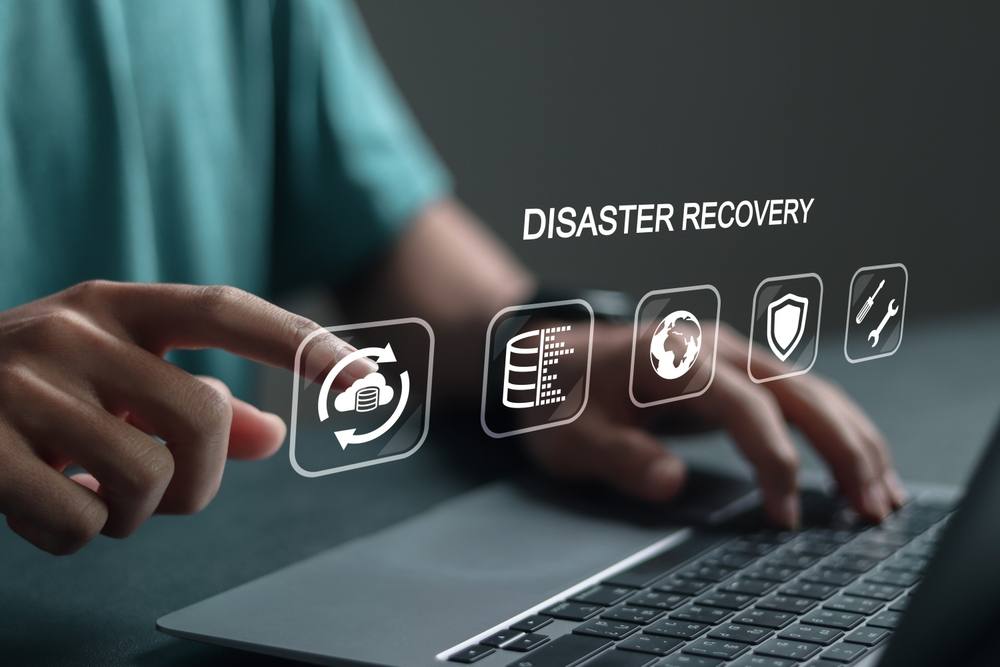Building Resilience Before Disaster Strikes: Foundational Strategies for IT Disaster Recovery

A disaster recovery plan should be a foundational IT strategy for any business.
When IT systems fail, the question to ask is not: “How fast can we recover?”
It should be: “Why weren’t we ready?”
Building IT resilience before an outage hits is an effective way to minimise downtime — and subsequently save your business from suffering a significant financial loss.
For IT professionals, that means developing a disaster recovery plan built on prevention, visibility, and disciplined operations. Let’s break down the key strategies every IT team should weave into their resilience playbook.

1. Eliminate Single Points of Failure (SPOFs)
To eliminate single points of failure, the goal is to design your infrastructure so that one server, switch, or database node can go offline without anyone noticing.
For example, implementing load balancing to distribute traffic, deploying workloads across multiple availability zones or regions in the cloud, and using mirrored systems for critical services is the best policy.
Yes, we appreciate that redundancy may feel costly upfront, but the return on investment becomes clear the moment something breaks.
In short, redundancy is the backbone of reliability.
Systems should never depend on a single component that can take down the whole operation if it fails. Redundancy ensures users keep working uninterrupted.
2. Maintain Infrastructure Like It Matters (Because It Does)
Outdated firmware, unsupported software, and growing technical debt are silent killers in IT ecosystems. Neglecting lifecycle management increases the likelihood of failure and makes recovery slower and costlier.
A proactive maintenance culture — where patching, upgrades, and hardware refresh cycles are scheduled, tracked, and automated — transforms resilience from a firefight into a habit.
Think of this approach as preventive medicine for your IT network: it’s a far easier and cost-effective solution than the emergency surgery you have to perform after a crash.
3. Full-Stack Observability and Monitoring
Visibility is power. Without it, you’re flying blind when systems degrade. Full-stack observability — spanning networks, applications, databases, and hybrid cloud environments — dramatically reduces mean time to resolution (MTTR).
According to a recent report citing the latest New Relic survey, organisations in the UK and Ireland that adopted observability tools for 24/7 monitoring reported a significant reduction in downtime impact.
The reason is simple: observability allows teams to detect anomalies before they spiral into outages, pinpoint root causes faster, and automate recovery workflows.

4. Change-Control Discipline
Surprisingly, many major outages are self-inflicted — the result of poorly executed or untested changes. Change-control discipline ensures that system updates, patches, or configuration changes don’t accidentally break production.
This means implementing structured change management frameworks with clear approval gates, automated rollbacks, and robust testing environments.
The rule of thumb is: If you can’t safely reverse it, you’re not ready to deploy it.
5. Disaster Recovery and Backup Testing
Having backups is good. Knowing they actually work is better. Disaster recovery plans that aren’t regularly tested create a false sense of security.
Real resilience requires scheduled failover drills, restore simulations, and operational readiness testing under real-world conditions.
When a genuine outage hits, your team should already know the playbook — because they’ve rehearsed it.
6. Capacity Planning and Performance Testing
Most outages don’t start with failure — they start with friction. Performance degradation, lag, or unresponsive systems often signal underlying issues like insufficient capacity or resource contention.
Regular load testing, capacity forecasting, and benchmarking ensure your infrastructure can handle peak demand without cracking. By identifying bottlenecks early, you prevent the slow creep toward catastrophe.
Want More IT Tips For Disaster Recovery Plan?
Downtime may be inevitable, but a lengthy disruption doesn’t have to be. IT professionals can transform disaster recovery from a reactive process into a resilient culture.
If you want more information about implementing a strategy to avoid IT downtime, check out our previous articles :
Counting the Cost: How IT Downtime Erodes Revenue and Profit Margins
How To Create An Effective Disaster Recovery Plan
Alternatively, why not get in touch with our expert IT consultants in London and discuss how we can help your company implement a customised recovery plan that protects your revenue.


